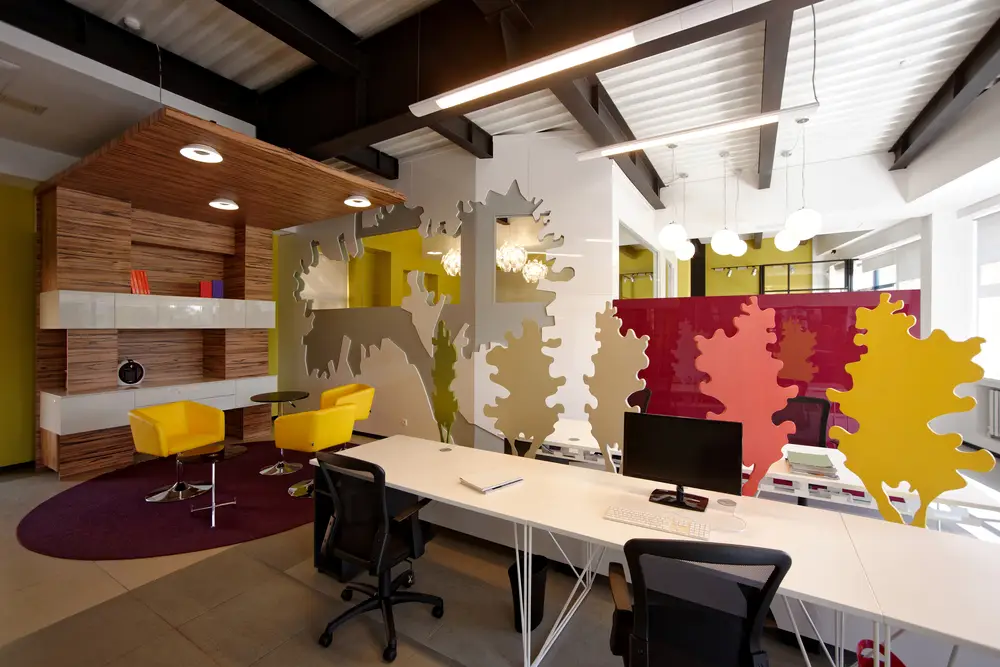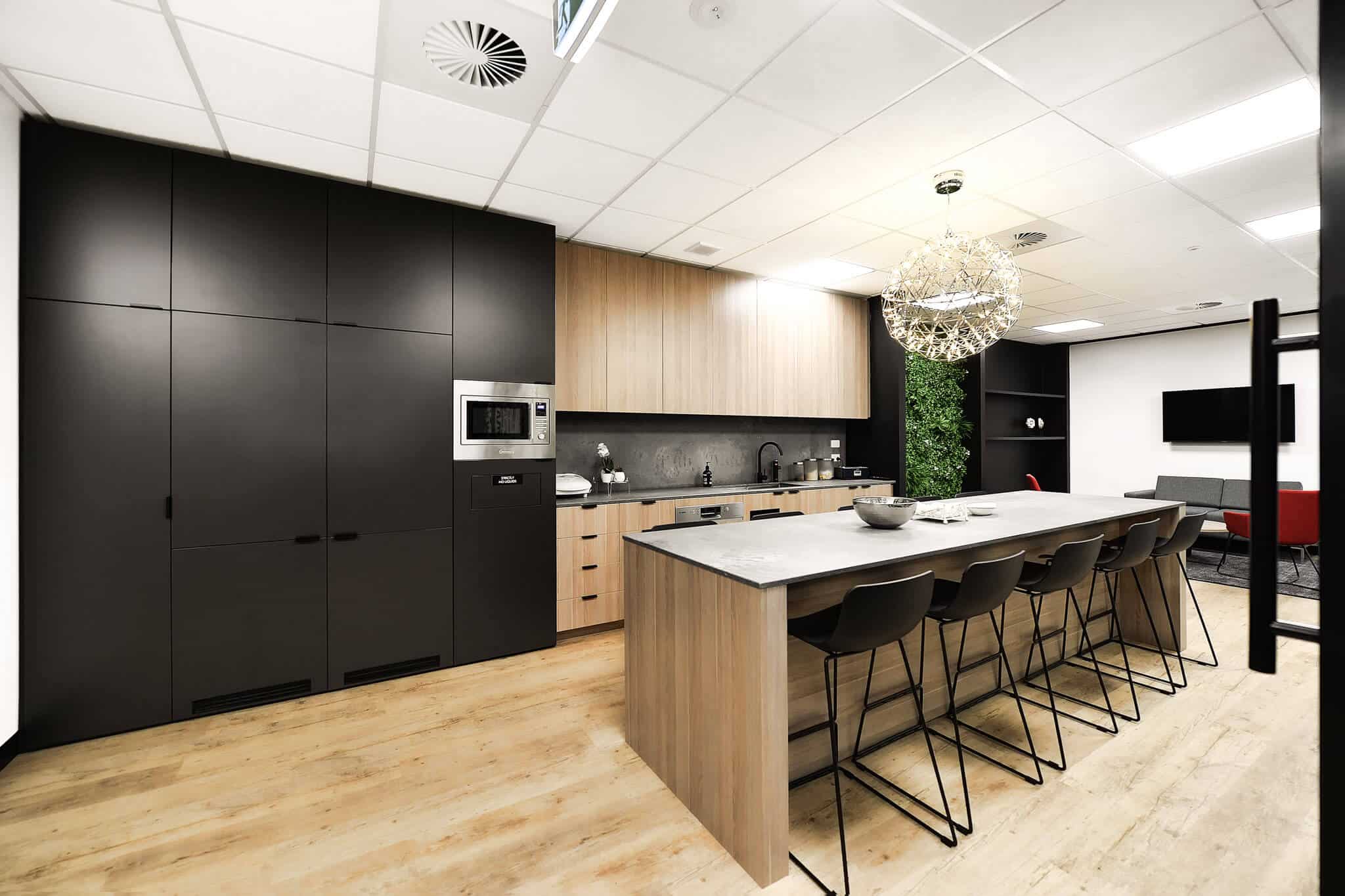What is workplace wellbeing?
Workplace wellbeing is having a moment in the sun, with employees and employers alike recognising the value of a holistic approach to work and life. Wellbeing in the workplace is related to how workers feel about themselves and their work, measuring employee satisfaction and ensuring workers are safe and engaged and that their health and personal wellbeing are prioritised.
As more organisations adapt to the post-pandemic landscape, wellbeing in the workplace is of paramount importance. With many organisations adopting remote or hybrid working policies, ensuring employees are supported to develop and maintain a healthy work-life balance means individual health is prioritised as a core element of organisational health. When workplaces foster wellbeing as a key priority, they’re more likely to be positive and productive.

The impact of wellbeing on performance
Not only is fostering workplace wellbeing good for the employee, but it’s good for the employer. A 2022 fact sheet by CIPD notes that “Promoting wellbeing can help prevent stress and create positive working environments where individuals and organisations can thrive. Good health and wellbeing can be a core enabler of employee engagement and organisational performance.” (Wellbeing at Work | Factsheets | CIPD, 2022).
It goes on to note “Our research shows that health and wellbeing shouldn’t have to be treated as an “add-on” or “nice-to-have” activity by organisations – if employers place employee wellbeing at the centre of their business model and view it as the vital source of value creation, the dividends for organisational health can be significant.” (Wellbeing at Work | Factsheets | CIPD, 2022).
When employers are able to support their employees within a holistic framework, they’re recognising the importance of physical and mental health and safety, as well as traditional employee support structures. With mental illness costing the economy between $200-$220b a year, mental health issues can lead to billions of dollars in lost productivity and absenteeism (Pupazzoni, 2022). When employee wellbeing is supported and prioritised within an organisation, employers benefit from a healthier and more inclusive culture, improved employee morale and engagement, and improved employee work-life balance.

How to improve employee wellbeing in the workplace
While each workplace will have its own individual considerations when it comes to employee wellbeing, there are a number of universal considerations that can be of benefit to employees across businesses. These include:
Flexible working conditions
If employees aren’t genuinely needed in a physical premise in order to fulfil their responsibilities, flexible working conditions can have a marked impact on employee wellbeing. Consider a hybrid or remote workplace, giving your employees the benefit of choice when it comes to what suits their individual workflows and personal needs.
Introducing nature into the workplace
Harshly lit cubicles are far from inspiring. Research has proven that bringing nature into the workplace can reduce stress and increase creativity and focus, with nature increasing both self-esteem and mood (Sander, 2022).

Make the most of colour
With different colours having different impacts on our emotions, it’s no surprise that the use of colour in a workplace can bring positivity into your employees’ days.
Improve air quality
Improving air quality can deliver substantial health benefits, including a reduction of chronic and acute respiratory diseases.
Improve your workplace lighting
Dimly lit spaces can place strain on your employees’ vision, leading to significant health problems and painful daily experiences. By providing adequate lighting that promotes a calm, inviting environment, you can improve both moods and productivity alike.
Manage noise control
It’s difficult to concentrate in a noisy environment. Consider how your workplace can promote noise control through distinct spaces for collaboration and for quiet work.
Encourage mobility
Design a workplace that empowers employees to introduce more mobility into their days, particularly for those who spend the majority of their time at a desk.

Improving employee wellbeing with workplace design
Major strides towards improving employee wellbeing can be achieved through thoughtful, intuitive, and strategic workplace design. With a wide range of workplace furniture options directly contributing to positive wellbeing outcomes, there’s no reason not to bring the best of workplace design practices into your organisation’s home.
Here are a few ways you can improve employee wellbeing through workplace design.
Introduce active furniture
Sit/stand desks are all the rage, and for good reason. Standing desks play a key role in helping people beat inactivity, and also lower the risk of heart disease, obesity, and back and neck pain. Even for those who exercise regularly, a sit/stand desk encourages a reduction in all-day stagnation. Sit/stand desks can also allow for walking pads, with some opting to walk at a slow pace while keeping up with emails and meetings. These small changes can lead to remarkable improvements in employee wellbeing.
Opt for ergonomic furniture
Ergonomic office furniture is designed to reduce the risk of work injury complaints and increase the physical and mental health of employees. Ergonomic furniture supports good posture through careful design and comfort, resulting in pain reductions and productivity boosts. When employees’ posture and form are supported throughout their work day, the risk of work-related injuries declines.

Create designated quiet areas
With the introduction of open floor plan offices came the loss of quiet working spaces. With different employees requiring different resources to cater to their individual abilities to focus, designating quiet areas can empower employees to access the space that’s most supportive of their productivity and peace throughout the work day.
Quiet spaces are work zones within the office that may be a separate room or a closed-off partition, with some companies also opting for pods to create these designated spaces. Here, employees can concentrate, removing themselves from the distractions of bustling workplace environments.

Build areas designed for collaboration
Interpersonal connection and a sense of belonging can have a positive impact on individual employee wellbeing. By designing space within the office that’s shaped for collaboration, teams can come together to work holistically towards shared outcomes. Consider elements such as whiteboards or digital tools that encourage collaboration and brainstorming, ensuring these spaces are comfortable and welcoming.

Incorporate wellbeing areas into the workplace
Wellbeing areas can be as versatile as your company requires. This may be as simple as carving out some space where employees can take some time to rest in a calm, quiet, comfortable environment. If you’re low on office space, consider an interactive noticeboard that promotes company wellbeing and unity, with different notes and initiatives highlighted throughout each week.
Invest in agile workspaces
Agile workspaces are work environments designed around complete flexibility, with employees encouraged to move around the office, using the space however they need. They may include a mix of open plan areas, quiet zones, breakout spaces, resource areas and touchdown spaces, such as a standing desk or an isolated workstation (Hogarty, 2022).

Encourage activity within your spaces
Encouraging physical activity is a key part of improving employee wellbeing. Some companies may opt to provide on-site gyms as a part of a complimentary employee resource, while others can use flexible work time to allow breaks for participation in a movement-based activity. This is one simple way to communicate the value of physical movement to your employees, in turn leading to health benefits for each individual.
Put the company culture into action
If your company has key elements about its culture or values that aren’t yet incorporated into your workplace customs, it’s time to put your money where your mouth is. Research has proven that people with good connections are happier, have less stress and are more engaged at work than their disconnected counterparts (Importance Of Connection In The Workplace | ACAP Blog, 2022). By demonstrating the company culture, employees have the opportunity to resonate on a personal level with its core beliefs and values.

How to begin improving wellbeing in your workplace
If workplace wellbeing hasn’t been a priority for you, there’s no better time than the present. You can begin this process by taking stock of current initiatives that are focused on employee wellbeing. Consider how your physical workplace, your remote work policies, and your social initiatives either support or detract from your efforts to support your employees.
Surveying your employees is also a powerful way to invite them into a collaborative process designed to promote wellbeing. Choose a few key options from these suggestions that you’d like to consider implementing into your workplace and ask your employees which they’re most likely to find beneficial – before you know it, you’ll have a useful dialogue around how your employees balance personal wellbeing alongside professional output, with insights that can drive not only your productivity as a team, but your overall sense of connection and cohesion.
Bowen Interiors create inspiring spaces where people thrive through customised commercial workspaces, interior design and office fitouts. Find the team you need to elevate your workplace with Bowen Interiors’ workspace experts. We’ll work with you to transform your office into a place where your people and business thrive.
Contact us today for an initial consultation to discuss your workspace design and office space planning needs.










